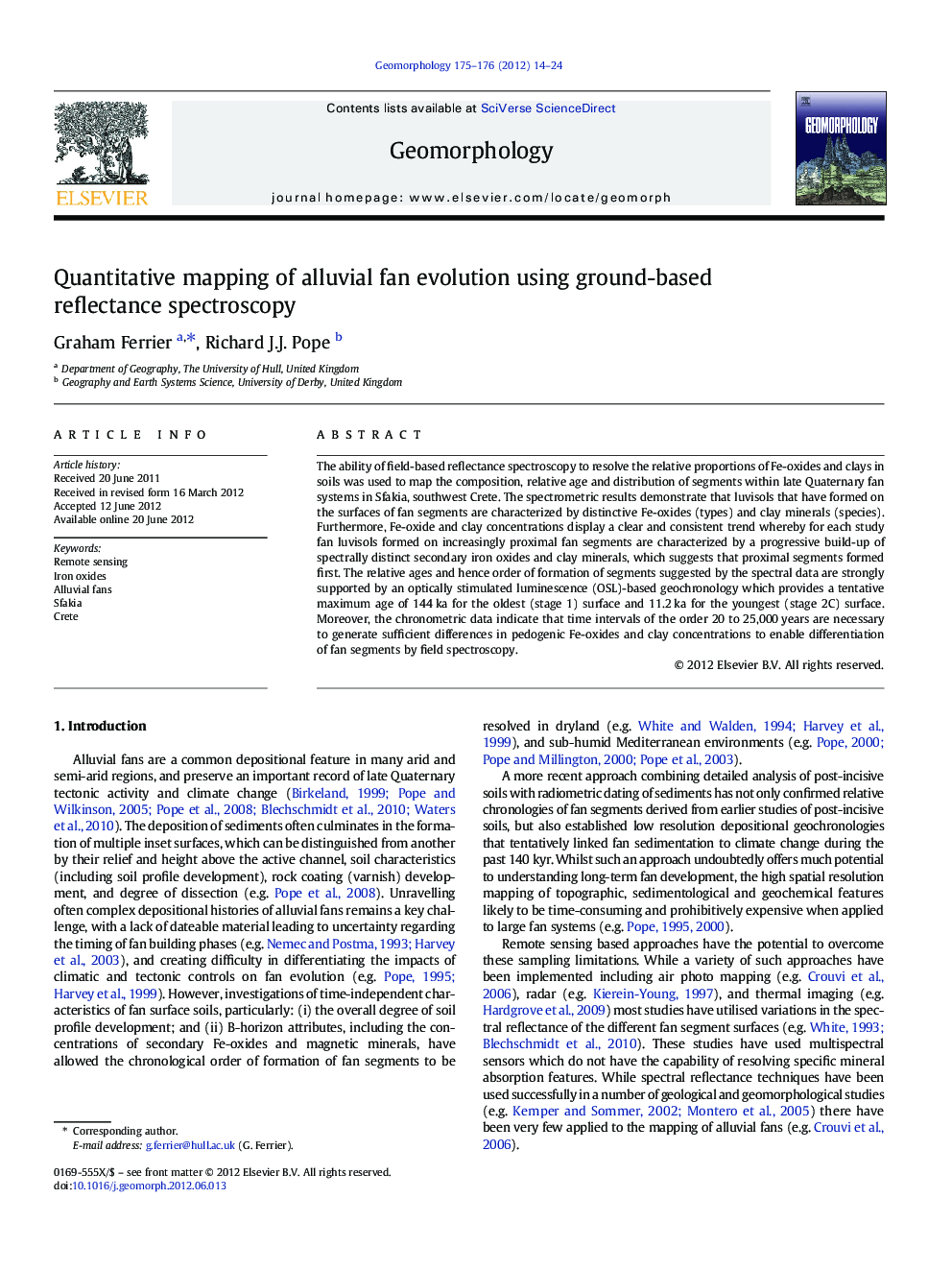| Article ID | Journal | Published Year | Pages | File Type |
|---|---|---|---|---|
| 4685153 | Geomorphology | 2012 | 11 Pages |
The ability of field-based reflectance spectroscopy to resolve the relative proportions of Fe-oxides and clays in soils was used to map the composition, relative age and distribution of segments within late Quaternary fan systems in Sfakia, southwest Crete. The spectrometric results demonstrate that luvisols that have formed on the surfaces of fan segments are characterized by distinctive Fe-oxides (types) and clay minerals (species). Furthermore, Fe-oxide and clay concentrations display a clear and consistent trend whereby for each study fan luvisols formed on increasingly proximal fan segments are characterized by a progressive build-up of spectrally distinct secondary iron oxides and clay minerals, which suggests that proximal segments formed first. The relative ages and hence order of formation of segments suggested by the spectral data are strongly supported by an optically stimulated luminescence (OSL)-based geochronology which provides a tentative maximum age of 144 ka for the oldest (stage 1) surface and 11.2 ka for the youngest (stage 2C) surface. Moreover, the chronometric data indicate that time intervals of the order 20 to 25,000 years are necessary to generate sufficient differences in pedogenic Fe-oxides and clay concentrations to enable differentiation of fan segments by field spectroscopy.
► Field-based reflectance spectroscopy was used to map alluvial fan segments. ► Strong relationships between spectral profiles and soil composition were identified. ► Fan segments were differentiated using time interval between depositional events. ► Age differences of 25,000 years are required to differentiate fan segments.
